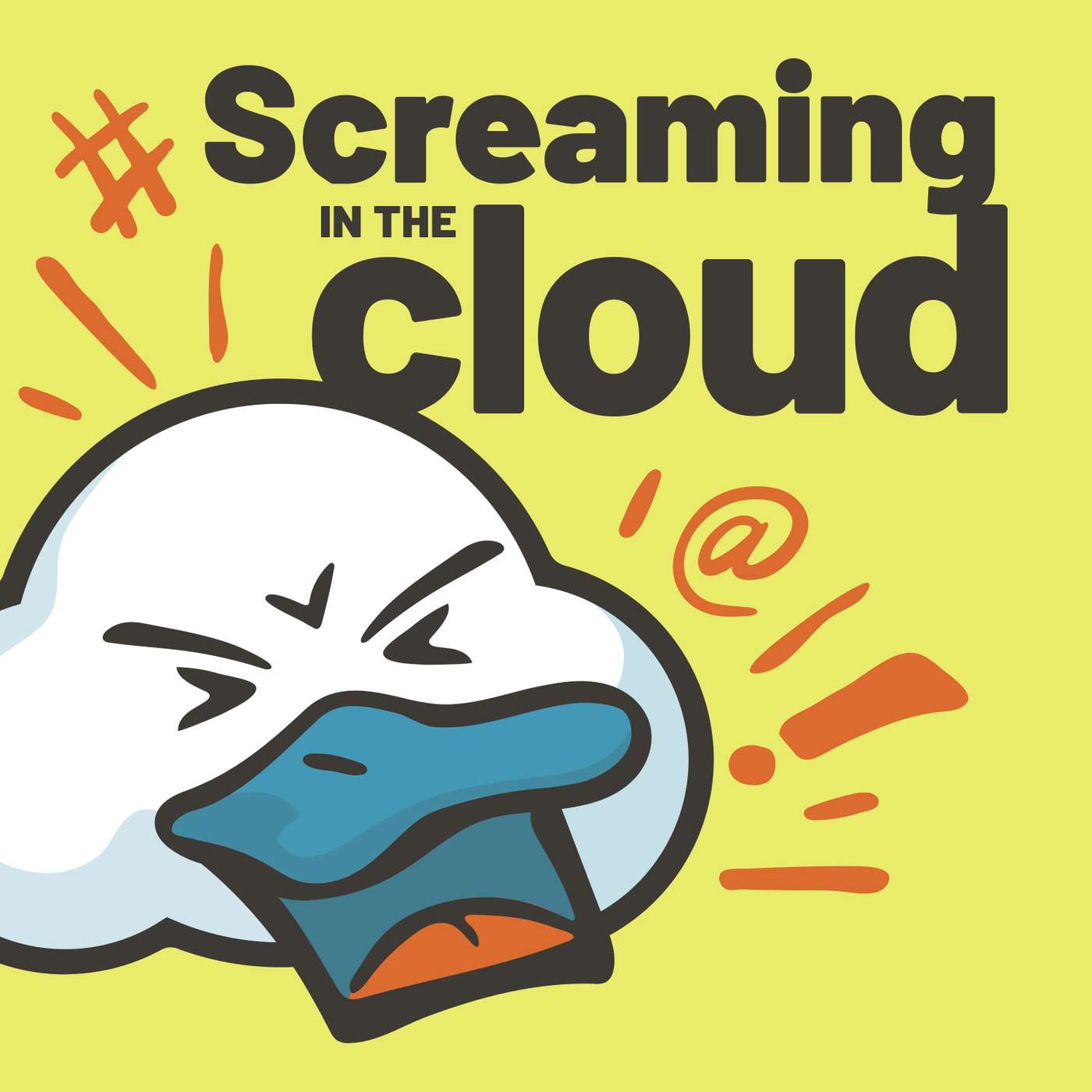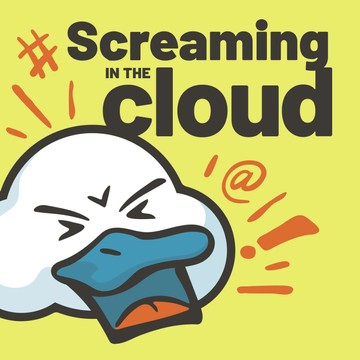

Screaming in the Cloud
Corey Quinn
Screaming in the Cloud with Corey Quinn features conversations with domain experts in the world of Cloud Computing. Topics discussed include AWS, GCP, Azure, Oracle Cloud, and the "why" behind how businesses are coming to think about the Cloud.
Episodes
Mentioned books

Feb 9, 2022 • 40min
The Redis Rebrand with Yiftach Shoolman
About YiftachYiftach is an experienced technologist, having held leadership engineering and product roles in diverse fields from application acceleration, cloud computing and software-as-a-service (SaaS), to broadband networks and metro networks. He was the founder, president and CTO of Crescendo Networks (acquired by F5, NASDAQ:FFIV), the vice president of software development at Native Networks (acquired by Alcatel, NASDAQ: ALU) and part of the founding team at ECI Telecom broadband division, where he served as vice president of software engineering.Yiftach holds a Bachelor of Science in Mathematics and Computer Science and has completed studies for Master of Science in Computer Science at Tel-Aviv University.Links:Redis, Inc.: https://redis.com/Redis open source project: https://redis.ioLinkedIn: https://www.linkedin.com/in/yiftachshoolman/Twitter: https://twitter.com/yiftachsh

Feb 8, 2022 • 31min
How to Investigate the Post-Incident Fallout with Laura Maguire, PhD
About LauraLaura leads the research program at Jeli.io. She has a Master’s degree in Human Factors & Systems Safety and a PhD in Cognitive Systems Engineering. Her doctoral work focused on distributed incident response practices in DevOps teams responsible for critical digital services. She was a researcher with the SNAFU Catchers Consortium from 2017-2020 and her research interests lie in resilience engineering, coordination design and enabling adaptive capacity across distributed work teams. As a backcountry skier and alpine climber, she also studies cognition & resilient performance in high risk, high consequence mountain environments. Links:Howie: The Post-Incident Guide: https://www.jeli.io/howie-the-post-incident-guide/Jeli: https://www.jeli.ioTwitter: https://twitter.com/lauramdmaguire

Feb 3, 2022 • 35min
The Proliferation of Ways to Learn with Serena (@shenetworks)
About Serena Serena is a Network Engineer who specializes in Data Center Compute and Virtualization. She has degrees in Computer Information Systems with a concentration on networking and information security and is currently pursuing a master’s in Data Center Systems Engineering. She is most known for her content on TikTok and Twitter as Shenetworks. Serena’s content focuses on networking and security for beginners which has included popular videos on bug bounties, switch spoofing, VLAN hoping, and passing the Security+ certification in 24 hours.Links:Cisco cert Discord study group:https://discord.com/invite/uXQ8yWnN8aBeacons:https://beacons.page/shenetworksTikTok:https://www.tiktok.com/@shenetworkssysengineer’s TikTok:https://www.tiktok.com/@sysengineerTwitter:https://twitter.com/notshenetworks

Feb 2, 2022 • 39min
Developing Storage Solutions Before the Rest with AB Periasamay
About ABAB Periasamy is the co-founder and CEO of MinIO, an open source provider of high performance, object storage software. In addition to this role, AB is an active investor and advisor to a wide range of technology companies, from H2O.ai and Manetu where he serves on the board to advisor or investor roles with Humio, Isovalent, Starburst, Yugabyte, Tetrate, Postman, Storj, Procurify, and Helpshift. Successful exits include Gitter.im (Gitlab), Treasure Data (ARM) and Fastor (SMART).AB co-founded Gluster in 2005 to commoditize scalable storage systems. As CTO, he was the primary architect and strategist for the development of the Gluster file system, a pioneer in software defined storage. After the company was acquired by Red Hat in 2011, AB joined Red Hat’s Office of the CTO. Prior to Gluster, AB was CTO of California Digital Corporation, where his work led to scaling of the commodity cluster computing to supercomputing class performance. His work there resulted in the development of Lawrence Livermore Laboratory’s “Thunder” code, which, at the time was the second fastest in the world. AB holds a Computer Science Engineering degree from Annamalai University, Tamil Nadu, India.AB is one of the leading proponents and thinkers on the subject of open source software - articulating the difference between the philosophy and business model. An active contributor to a number of open source projects, he is a board member of India's Free Software Foundation.Links:MinIO: https://min.io/Twitter: https://twitter.com/abperiasamyMinIO Slack channel: https://minio.slack.com/join/shared_invite/zt-11qsphhj7-HpmNOaIh14LHGrmndrhocALinkedIn: https://www.linkedin.com/in/abperiasamy/

Feb 1, 2022 • 37min
Tackling Tech Head-On with Natalie Davis
About NatalieI'm interested in solving human problems through technology (she/her). Share your screen (or I'll share mine) and we'll figure this out!Links:Netlify: https://www.netlify.com/Twitter: https://twitter.com/codeFreedomRitr

Jan 27, 2022 • 37min
The Relevancy of Backups with Nancy Wang
About NancyNancy Wang is a global product and technical leader at Amazon Web Services, where she leads P&L, product, engineering, and design for its data protection and governance businesses. Prior to Amazon, she led SaaS product development at Rubrik, the fastest-growing enterprise software unicorn and built healthdata.gov for the U.S. Department of Health and Human Services. Passionate about advancing more women into technical roles, Nancy is the founder & CEO of Advancing Women in Tech, a global 501(c)(3) nonprofit with 16,000+ members worldwide.Nancy is an angel investor in data security and compliance companies, and an LP with several seed- and growth-stage funds such as Operator Collective and IVP. She earned a degree in computer science from the University of Pennsylvania.Links:https://coursera.org/awitAdvancing Women in Technology: https://www.advancingwomenintech.orgLinkedIn: https://www.linkedin.com/in/wangnancy/Advancing Women in Technology LinkedIn: https://www.linkedin.com/company/advancingwomenintech/

Jan 26, 2022 • 37min
Walking the Arcane Halls of AWS with Rachel Kelly
About RachelRachel Kelly is a Senior Engineer at Fastly in Infrastructure, and is a proud career-switcher over to tech as of about eight years ago. She lives in the Pacific Northwest and spends her time thinking about crafts, cycling, leadership, and ditching Google. Previously, she worked at Bright.md wrestling Ansible and Terraform into shape, and before then, a couple years at Puppet. You can reach Rachel on twitter @wholemilk, or at hello@rkode.com.Links:Fastly: https://www.fastly.comSeaGL: https://seagl.orgTwitter: https://twitter.com/wholemilk

Jan 25, 2022 • 41min
Drawing from the Depths of Experience with Deirdré Straughan
About DeirdréFor over 35 years, Deirdré Straughan has been helping technologies grow and thrive through marketing and community. Her product experience spans consumer apps and devices, cloud services and technologies, and kernel features. Her toolkit includes words, websites, blogs, communities, events, video, social, marketing, and more. She has written and edited technical books and blog posts, filmed and produced videos, and organized meetups, conferences, and conference talks. She just started a new gig heading up open source community at Intel. You can find her @deirdres on Twitter, and she also shares her opinions on beginningwithi.comLinks:“Marketing Your Tech Talent”: https://youtu.be/9pGSIE7grSsPersonal Webpage: https://beginningwithi.comTwitter: https://twitter.com/deirdres

Jan 20, 2022 • 39min
Learning to Give in the Cloud with Andrew Brown
About AndrewI create free cloud certification courses and somehow still make money.Links:ExamPro Training, Inc.: https://www.exampro.co/PolyWork: https://www.polywork.com/andrewbrownLinkedIn: https://www.linkedin.com/in/andrew-wc-brownTwitter: https://twitter.com/andrewbrown

Jan 19, 2022 • 34min
Find, Fix and Eliminate Cloud Vulnerabilities with Shir Tamari and Company
About ShirShir Tamari is the Head of Research of Wiz, the cloud security company. He is an experienced security and technology researcher specializing in vulnerability research and practical hacking. In the past, he served as a consultant to a variety of security companies in the fields of research, development and product.About SagiSagi Tzadik is a security researcher in the Wiz Research Team. Sagi specializes in research and exploitation of web applications vulnerabilities, as well as network security and protocols. He is also a Game-Hacking and Reverse-Engineering enthusiast.About NirNir Ohfeld is a security researcher from Israel. Nir currently does cloud-related security research at Wiz. Nir specializes in the exploitation of web applications, application security and in finding vulnerabilities in complex high-level systems.Links:Wiz: https://www.wiz.ioCloud CVE Slack channel: https://cloud-cve-db.slack.com/join/shared_invite/zt-y38smqmo-V~d4hEr_stQErVCNx1OkMAWiz Blog: https://wiz.io/blogTwitter: https://twitter.com/wiz_io


